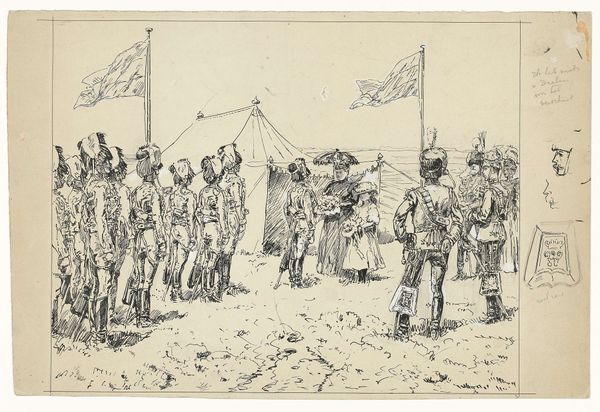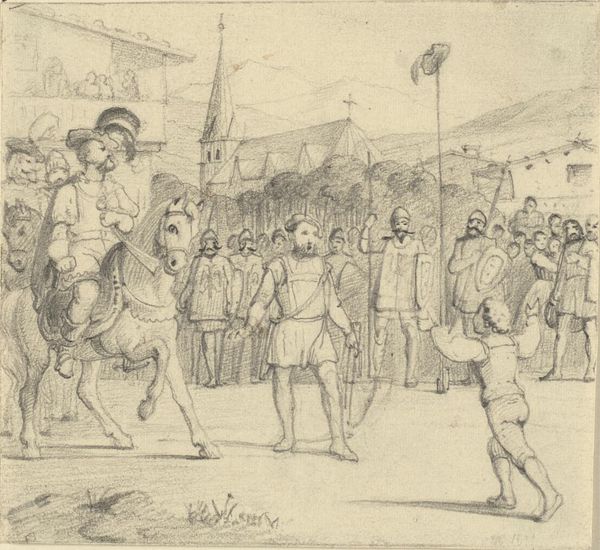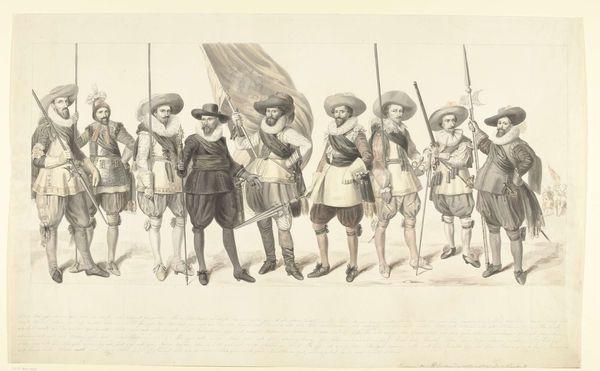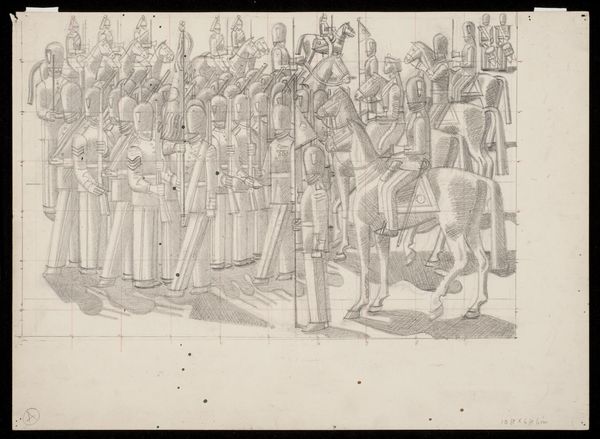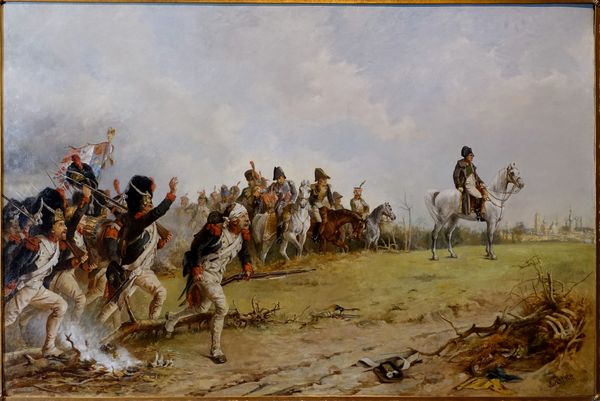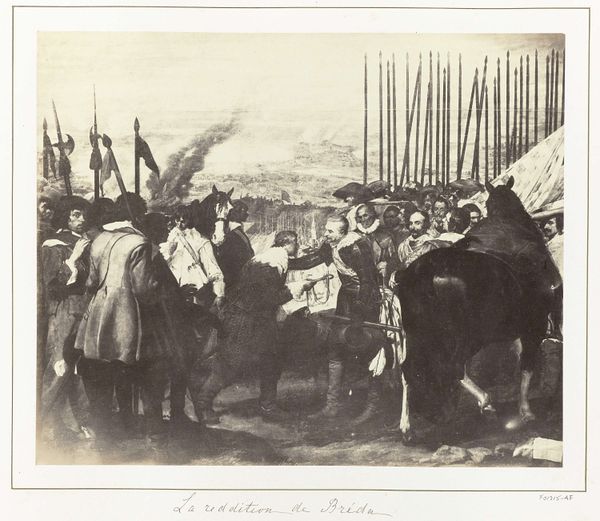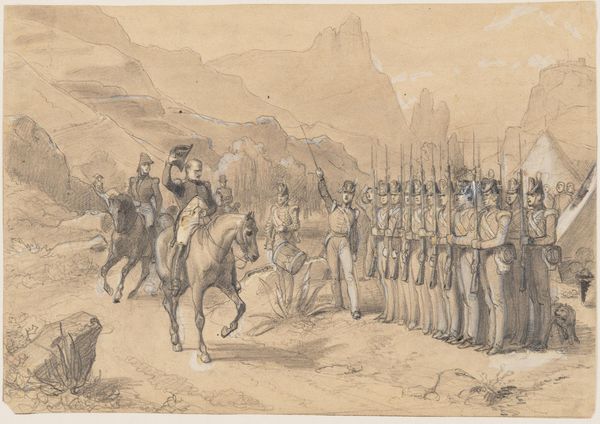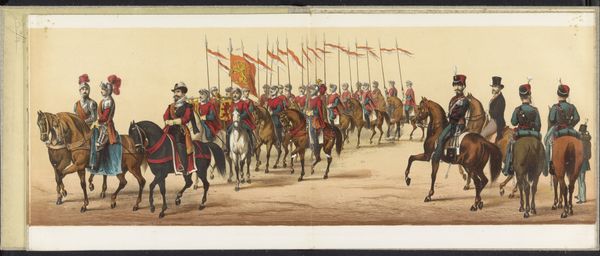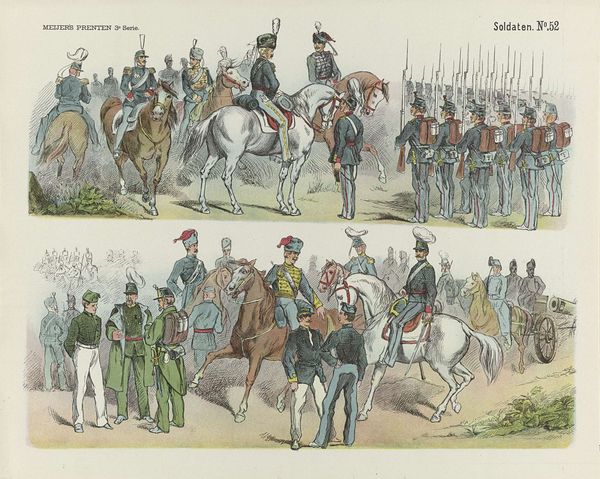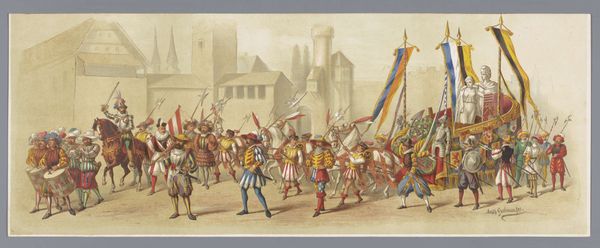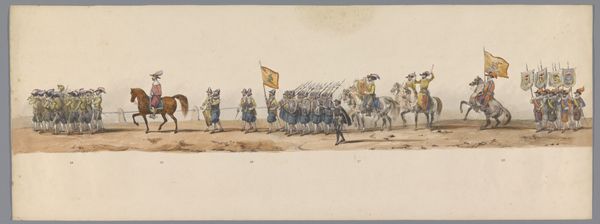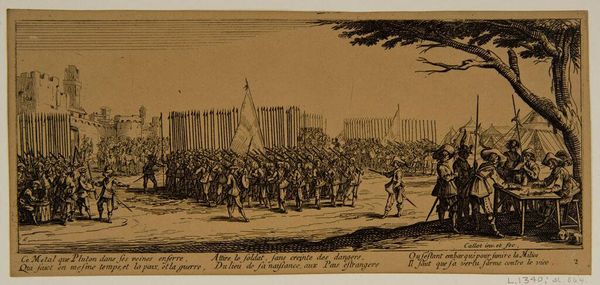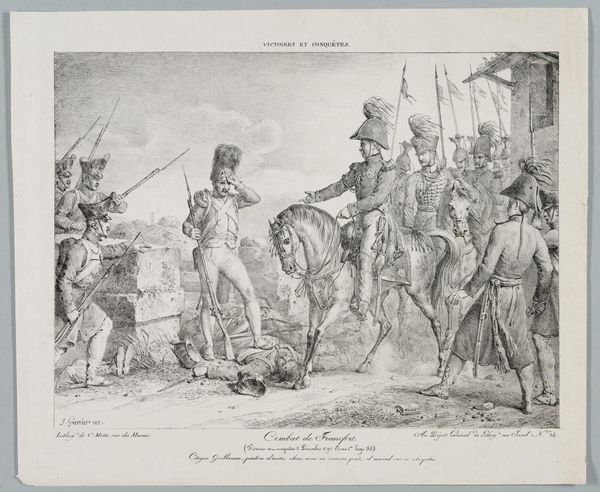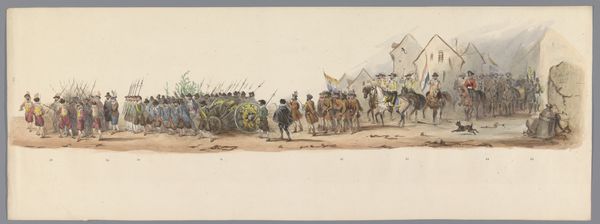
drawing, print, watercolor
#
portrait
#
drawing
# print
#
figuration
#
watercolor
#
symbolism
#
history-painting
#
academic-art
#
watercolor
Copyright: Public Domain: Artvee
Curator: James Ensor's "The Farewell of Napoleon," created in 1896, is a fascinating convergence of history painting, printmaking, and watercolor techniques. Editor: My first impression is one of controlled chaos. The red ink dominates the work, but I think the scene's underlying sadness emerges strongly because it's so small and intimate. It almost feels like a miniature theater stage. Curator: I agree that the red evokes both the spectacle of power and underlying tension in the historical moment depicted, but I believe that is a consequence of our history: Napoleon's power was based on exploitation. Also, it feels charged with socio-political context if you consider that this piece emerges almost a century after Napoleon’s fall, so what did Ensor try to challenge? Editor: Yes, I agree that the intense coloring surely alludes to conflict, even violence; that's enhanced by Ensor’s handling of materials. You can clearly see how the ink is applied so swiftly and without restraint, yet how he created that impression of masses—all those soldierly materials represented as watercolor on paper are fascinating! Curator: Thinking about its place within art history, Ensor pushes against traditional academic approaches by inserting his own personal narrative into the history-painting format. He presents the French ruler as one more tragic protagonist of political changes. His works challenge us to re-evaluate the mythologizing of historical figures, in any position. Editor: Absolutely! What I admire about his strategy is the reduction to the bare essentials, revealing how social rituals or hierarchies operate in human dynamics, as he distills the story to just color, composition, and technique. It prompts a profound sense of isolation. Curator: Yes, this small piece prompts us to ponder about the relationship between historical representation, artistic intention, and contemporary relevance. Editor: Exactly, the materials become carriers of emotion and sociopolitical intent. The tension gives new layers of interpretation. It’s not merely about historical reenactment, but about re-evaluating our present with new materials to talk about collective stories.
Comments
No comments
Be the first to comment and join the conversation on the ultimate creative platform.
